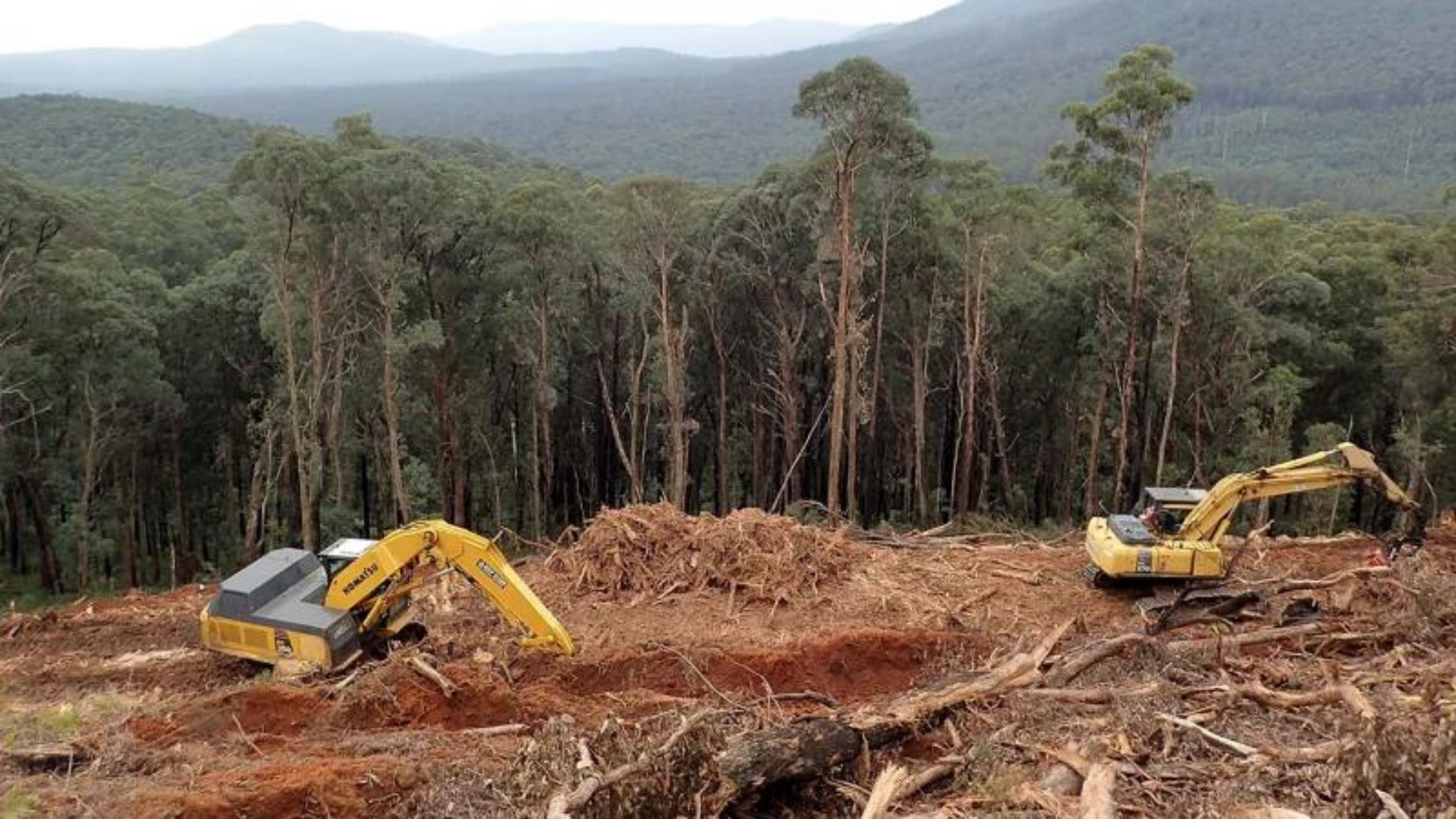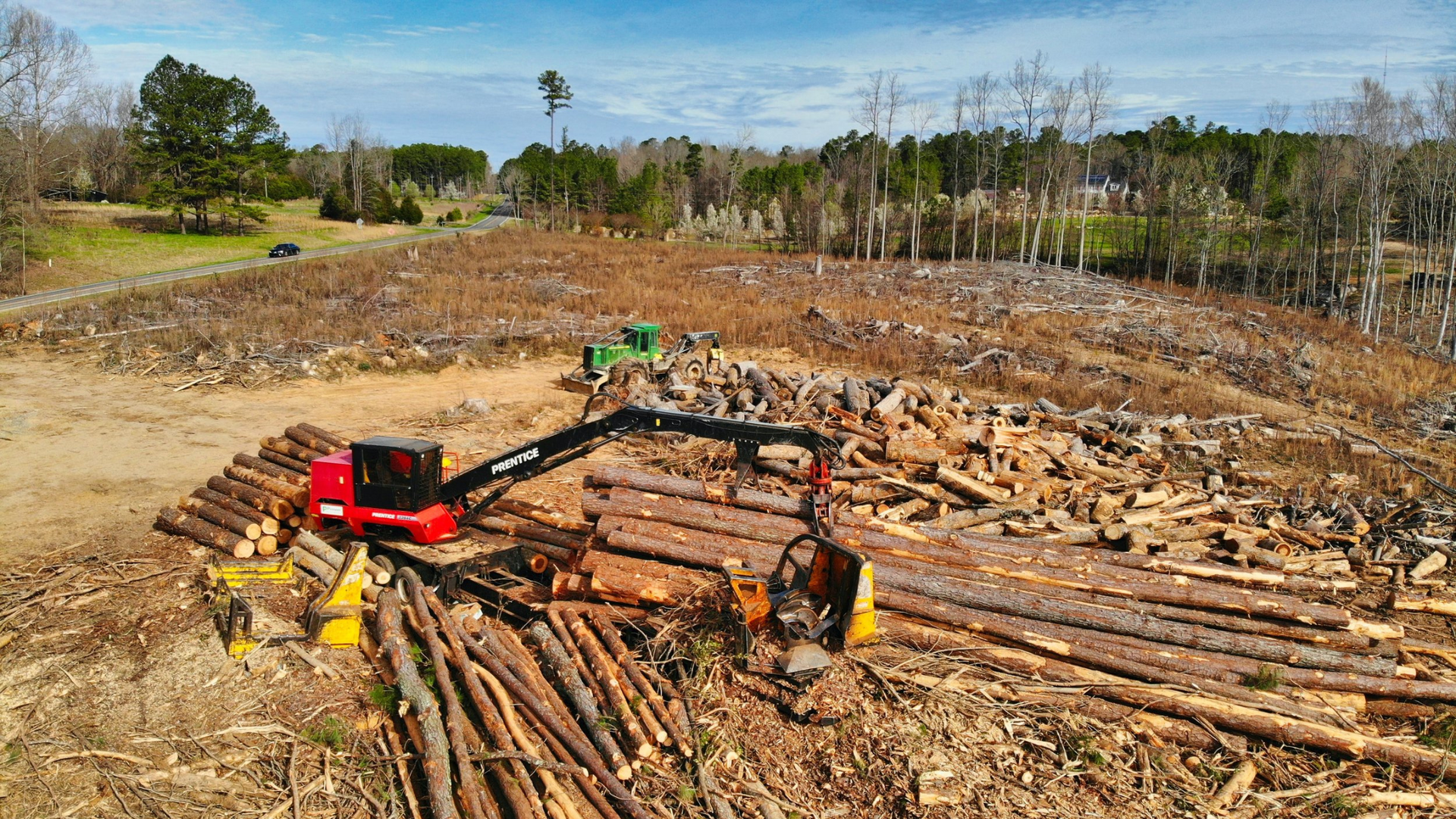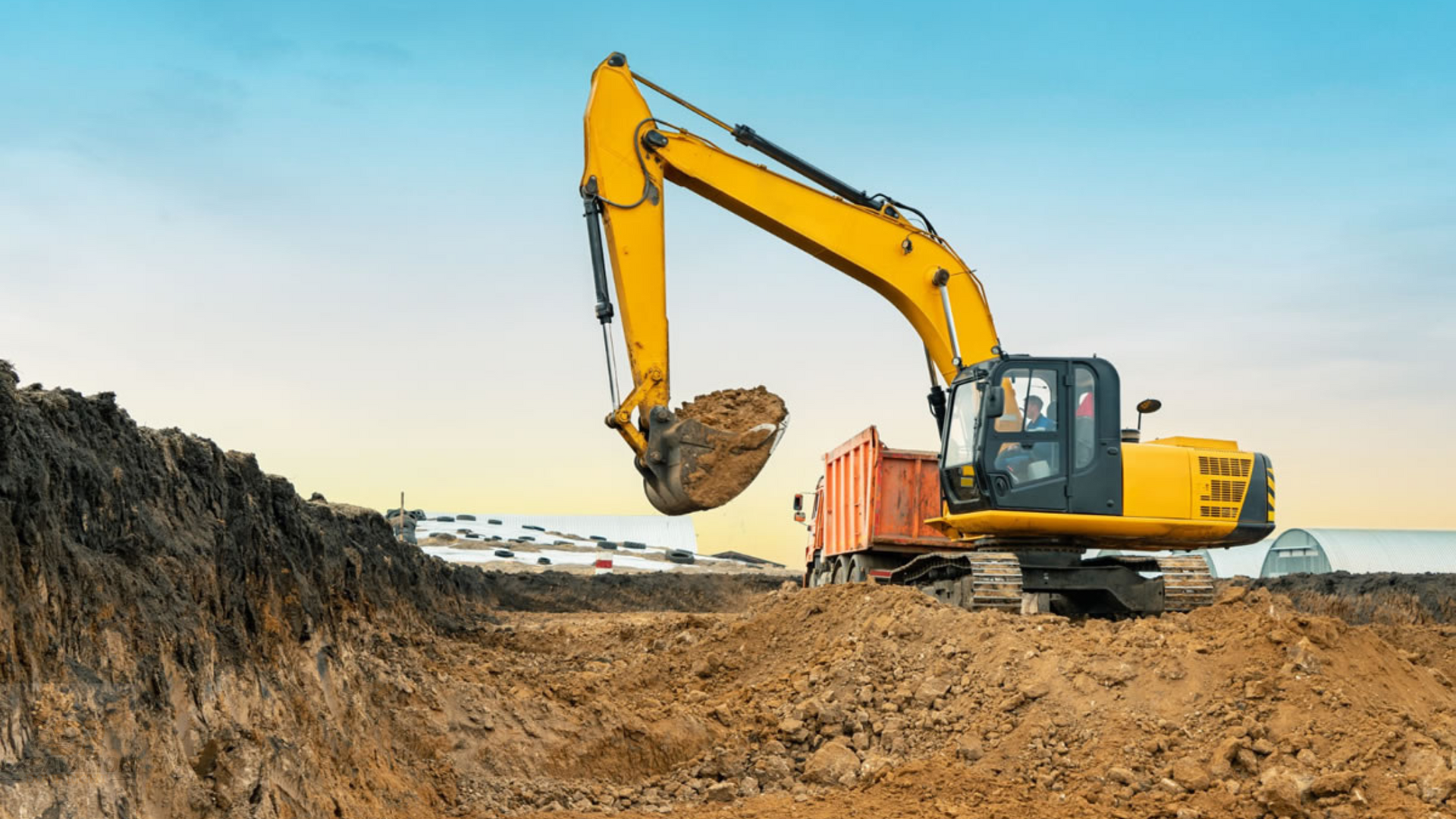Clearing land is a crucial step in any construction or landscaping project, but it's often underestimated in terms of its complexity and importance. Whether you're preparing a site for a new building, creating space for agricultural use, or enhancing the aesthetics of your property, effective land clearing strategies can make all the difference. At Excavation Done Right, we understand the significance of efficient land clearing, and we're here to share some insights into how you can maximize your results.
One of the major elements of successful land clearing is proper planning. Before starting any work, take the time to assess the site thoroughly. Identify any obstacles such as trees, rocks, or debris that need to be removed, and determine the best approach for tackling them. By having a clear plan in place, you can minimize delays and ensure that the clearing process proceeds smoothly.
In addition to planning, having the right equipment is essential for efficient land clearing. At Excavation Done Right, we utilize state-of-the-art machinery and tools to get the job done quickly and effectively. From bulldozers and excavators to brush cutters and mulchers, we have the equipment needed to handle any clearing project, regardless of size or complexity. By investing in high-quality equipment, we're able to streamline the process and achieve superior results for our clients.
Another important aspect of land clearing is environmental sustainability. Clearing land can have a significant impact on the surrounding ecosystem, so it's essential to minimize any negative effects. At Excavation Done Right, we prioritize environmentally friendly practices in all of our projects. Whether it's preserving native vegetation, minimizing soil disturbance, or properly disposing of waste materials, we take every precaution to ensure that our clearing activities are as sustainable as possible.
Effective land clearing requires careful planning, the right equipment, and a commitment to environmental stewardship. By following these strategies, you can maximize efficiency and achieve the best possible results for your project. At Excavation Done Right, we're dedicated to providing top-notch land clearing services that meet the needs of our clients while minimizing our environmental footprint. If you're in need of land clearing assistance, don't hesitate to contact us today!
Key Takeaways
- As experts in excavation and land clearing services, we have gathered invaluable insights to ensure optimal results for our clients.
- Understanding the terrain, soil composition, and potential environmental impacts enables us to devise a tailored clearing strategy that maximizes efficiency while minimizing disruptions.
- We employ a diverse fleet of advanced machinery, including bulldozers, excavators, and mulchers, to tackle various types of terrain and vegetation.
Land Clearing: An Overview

Welcome to Excavation Done Right! If you're in need of land clearing services, you've come to the right place. In this blog post, we'll delve into the essential aspects of land clearing, offering you a comprehensive overview of the process and its importance. Land clearing is a vital step in various construction and development projects, ensuring that the designated area is free from obstacles and ready for further work. At Excavation Done Right, we specialize in providing top-notch land clearing services to meet the unique needs of our clients. Whether you're planning to build a new residential property, commercial complex, or industrial facility, our team is equipped with the expertise and equipment to get the job done efficiently and effectively.
Land clearing, safety and precision are paramount. Our experienced professionals understand the importance of proper planning and execution to minimize risks and maximize results. We utilize advanced techniques and state-of-the-art machinery to clear vegetation, trees, rocks, and other obstructions with precision and accuracy. By partnering with Excavation Done Right, you can rest assured that your land clearing project will be handled with the utmost care and attention to detail.
Furthermore, environmental sustainability is a core value that guides our operations. We take proactive measures to minimize the impact of land clearing activities on the surrounding ecosystem. Our team follows best practices and adheres to regulatory guidelines to ensure responsible land management and conservation. Whether it involves preserving natural habitats, mitigating erosion, or implementing erosion control measures, we prioritize environmental stewardship in every aspect of our work.
Our customer satisfaction is our top priority. We strive to deliver results that exceed expectations, providing timely and reliable service that aligns with your project goals and budget. From initial consultation to project completion, our team is committed to delivering excellence every step of the way. Whether you require land clearing for a small-scale residential project or a large-scale commercial development, you can trust Excavation Done Right to deliver exceptional results that lay the groundwork for success. Contact us today to learn more about our land clearing services and how we can assist you with your next project.
Benefits of Proper Land Clearing
Proper land clearing offers several benefits, including:
Enhanced Safety
Safety is paramount in any construction endeavor, and professional land clearing significantly enhances safety on the worksite. Our team of experienced professionals utilizes the latest equipment and techniques to efficiently clear the land while minimizing risks and hazards. By removing trees, stumps, rocks, and other obstacles, we create a clean and level surface, reducing the chances of accidents and injuries during subsequent construction activities.
One of the key benefits of professional land clearing is the prevention of potential hazards. Overgrown vegetation and debris on the site can pose various risks, including tripping hazards, falling branches, and uneven terrain. With our expertise in land clearing, we systematically assess the area and eliminate any potential dangers, ensuring a safe environment for both workers and equipment.
Moreover, proper land clearing promotes environmental sustainability. Our team employs eco-friendly practices to minimize the impact on the surrounding ecosystem while preparing the land for development. By responsibly managing vegetation and debris, we help preserve natural habitats and maintain the ecological balance of the area.
Improved Site Accessibility
Land clearing is a vital step in preparing your property for construction, landscaping, or agricultural purposes. Whether you're planning to build a new structure, expand existing facilities, or create a picturesque outdoor space, proper land clearing is essential for a successful outcome. By removing obstacles such as trees, bushes, rocks, and debris, we ensure that your site is clear, safe, and ready for development.
With our advanced equipment and experienced professionals, we can tackle land clearing projects of any size or complexity. From small residential lots to large commercial properties, we have the expertise and resources to get the job done efficiently and effectively. Our team follows strict safety protocols and environmental regulations to minimize any potential impact on the surrounding ecosystem.
By investing in professional land clearing services, you can significantly improve the accessibility of your site. Clearing out vegetation and obstructions not only creates a more open and usable space but also enhances visibility and maneuverability for vehicles and equipment. Whether you're a homeowner, developer, or contractor, our land clearing services can help you maximize the potential of your property.
Optimized Land Use
Land clearing isn't merely about removing vegetation and debris; it's about carefully strategizing to maximize space while preserving the environment. Our team employs state-of-the-art techniques and equipment to execute land clearing with precision and efficiency. By leveraging advanced technologies, we minimize disruptions to the surrounding ecosystem and ensure compliance with environmental regulations.
With our comprehensive land clearing services, we transform overgrown or unusable land into a blank canvas ready for development. From residential subdivisions to commercial properties, our meticulous approach ensures that every project starts on the right foot. By clearing away obstacles and unwanted vegetation, we create space for construction, agriculture, or other designated purposes, optimizing the land's potential for our clients.
Moreover, our commitment to sustainability sets us apart in the industry. We prioritize responsible land management practices, such as selective clearing and erosion control measures, to minimize our ecological footprint. By preserving natural habitats and minimizing soil disturbance, we contribute to the long-term health and viability of the land.
Prevention of Environmental Damage
Land clearing, when done improperly, can have detrimental effects on ecosystems and biodiversity. It can lead to soil erosion, loss of habitat for wildlife, and disruption of natural water flow patterns. Moreover, the use of heavy machinery and indiscriminate clearing methods can exacerbate these impacts, causing long-term damage to the environment.
To prevent such damage, it is essential to employ responsible land clearing techniques. This involves careful planning and assessment of the site to minimize disturbance to existing vegetation and wildlife habitats. At Excavation Done Right, we prioritize the use of selective clearing methods, which target only the necessary areas for development while preserving as much of the natural landscape as possible.
Furthermore, we adhere to strict guidelines and regulations set forth by environmental agencies to ensure compliance with local laws and regulations. By staying informed and up-to-date on the latest environmental policies, we can guarantee that our land clearing practices are environmentally responsible and sustainable.
Land Clearing Techniques

Several techniques can be employed for effective land clearing, depending on factors such as site size, terrain, and vegetation density. Here are some commonly used methods:
Manual Clearing
Manual clearing involves the physical removal of vegetation, debris, and obstacles by hand or with handheld tools, making it an ideal choice for projects where precision and careful attention to detail are paramount. We understand the importance of meticulous land preparation, and we advocate for the use of manual clearing techniques for several compelling reasons.
Firstly, manual clearing offers unparalleled precision, allowing workers to selectively remove vegetation and obstacles while preserving desirable features such as trees or delicate ecosystems. This precision is particularly crucial in environmentally sensitive areas where minimizing disruption is essential. By handpicking debris and vegetation, manual clearing reduces the risk of damage to surrounding vegetation and wildlife habitats, ensuring that the ecological balance remains intact.
Secondly, manual clearing is a versatile solution that can be tailored to suit the specific needs of each project. Whether it's clearing small parcels of land or navigating through densely vegetated areas, manual clearing techniques can adapt to various terrain types and conditions. This adaptability makes manual clearing an ideal choice for projects with challenging landscapes or limited access for heavy machinery.
Furthermore, manual clearing offers significant environmental benefits compared to mechanized methods such as bulldozing or mulching. By avoiding the use of heavy machinery, manual clearing minimizes soil compaction and disturbance, which helps preserve soil structure and fertility. Additionally, manual clearing produces fewer emissions and noise pollution, making it a more sustainable option for land preparation.
Mechanical Clearing
Mechanical clearing involves the use of heavy-duty equipment such as excavators, bulldozers, and forestry mulchers to remove vegetation, trees, rocks, and other obstacles from the site. Unlike traditional methods like manual clearing or chemical treatments, mechanical clearing offers several distinct advantages. Firstly, it significantly reduces the time and labor required for the clearing process. With the power and efficiency of modern machinery, large swathes of land can be cleared in a fraction of the time it would take using conventional methods.
Moreover, mechanical clearing ensures thoroughness and consistency in the clearing process. The precision of the equipment allows for precise removal of vegetation and debris while minimizing damage to the surrounding environment. This is particularly important in sensitive ecosystems where preserving native flora and fauna is a priority.
For landowners and developers seeking to maximize the usable space on their property, mechanical clearing offers unparalleled versatility. Whether preparing land for construction, agricultural purposes, or forestry management, this method can handle a wide range of terrain and vegetation types with ease. From dense forests to overgrown fields, mechanical clearing excels in transforming rough terrain into cleared, usable land.
Chemical Clearing
Chemical clearing involves the strategic application of environmentally safe chemicals to target unwanted vegetation, effectively accelerating its decomposition and facilitating the clearing process. Unlike mechanical methods that often result in soil erosion and disturbance, chemical clearing minimizes soil disruption, preserving its integrity for future use.
One of the key benefits of chemical clearing is its versatility. Whether you're tackling dense forest undergrowth or invasive species encroaching on your property, chemical solutions can be tailored to suit your specific needs. By selectively targeting unwanted vegetation, chemical clearing allows for precise control over land use and promotes the growth of desirable plants, ultimately enhancing the aesthetics and functionality of your property.
Environmental sustainability is at the forefront of our approach to land clearing, and chemical clearing aligns seamlessly with our commitment to preserving natural ecosystems. By utilizing eco-friendly chemicals and minimizing soil disturbance, we strive to minimize our ecological footprint while delivering exceptional results for our clients.
Fire Clearing
Fire clearing offers several advantages over traditional methods such as manual or mechanical clearing. Firstly, it is a cost-effective solution, requiring minimal labor and equipment compared to other methods. This affordability makes it an attractive option for large-scale projects where budget constraints may be a concern. Additionally, fire clearing is known to be significantly faster than alternative methods, allowing for swift progress in land preparation.
Beyond its economic benefits, fire clearing also contributes to soil health and regeneration. The controlled burn not only removes unwanted vegetation but also breaks down organic matter, returning nutrients to the soil. This process, known as pyrolysis, helps to improve soil structure and fertility, ultimately enhancing the success of future agricultural endeavors or landscaping projects.
Conclusion
As we come to the end of our exploration into land clearing, it's essential to recognize the critical role it plays in various projects and developments. Land clearing isn't merely about removing trees and vegetation; it's about preparing the ground for new opportunities and growth. We understand the intricacies involved in land clearing and the importance of executing it properly.
Whether you're embarking on a residential construction project, developing commercial properties, or enhancing the landscape for agricultural purposes, proper land clearing sets the foundation for success. It facilitates access to the site, ensures safety for workers and equipment, and promotes environmental sustainability when done responsibly.
Frequently asked questions (FAQs)
What is land clearing?
Land clearing is the process of removing obstacles such as trees, bushes, rocks, and debris from a piece of land to prepare it for construction, agriculture, or other purposes. It involves the use of specialized equipment and techniques to ensure efficient and safe removal of vegetation and obstacles.
Why is land clearing necessary?
Land clearing is necessary for various reasons, including site development for construction projects, creating space for agricultural activities, improving access to land, reducing fire hazards, and enhancing the aesthetic appeal of the property. By clearing the land, you can maximize its potential and achieve your desired objectives effectively.
What methods are used for land clearing?
Several methods can be used for land clearing, depending on the size of the area, terrain, and types of vegetation present. Common techniques include mechanical clearing using bulldozers and excavators, manual clearing with chainsaws and hand tools, and chemical clearing using herbicides. The choice of method depends on factors such as cost, time constraints, environmental considerations, and the desired outcome.
Is land clearing environmentally friendly?
When done responsibly and in accordance with local regulations, land clearing can be environmentally friendly. Proper planning, selective clearing, erosion control measures, and reforestation efforts can minimize the impact on the ecosystem and wildlife habitats. Working with experienced professionals who prioritize environmental stewardship is crucial to ensure sustainable land management practices.


